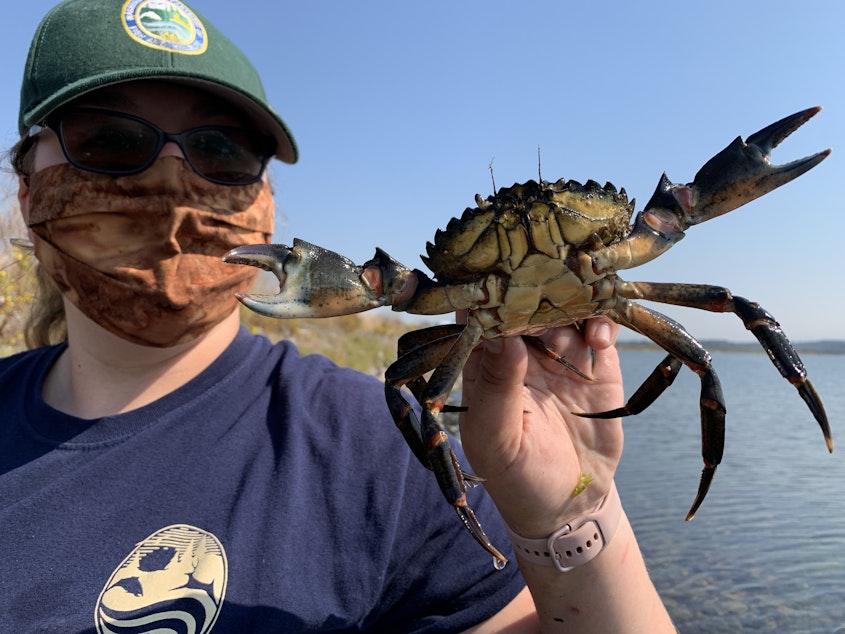Washington Gov. Inslee declares European green crab emergency

Washington Governor Jay Inslee has authorized emergency actions to combat an infestation of European green crabs.
The crab is considered one of the world’s most destructive invasive species.
Inslee says the need to protect local shellfish and ecosystems from the crabs is too urgent to wait for the legislature to approve new funding.
“The costs of a delay in counteracting the infestation are unacceptably high,” his emergency proclamation states. It calls the crabs “an imminent threat to the environment, economy, and human well-being of Washington state.”
Late last year, the Lummi and Makah tribes declared the crab invasions in their territories a disaster. In December, the Lummi government urged Inslee to declare an emergency over the threat to the Dungeness crab and salmon the tribe relies on.
“We're a fishing nation,” Lummi Nation chairman William Jones Jr. told KUOW in December. “The families survive off the sea.”
Sponsored
“We need to protect that,” he said.
On Dec. 14, the Washington Department of Fish and Wildlife requested $8.9 million in emergency funding to repel the crab invasion.
"Without adequate control and removal efforts, these established populations of green crab threaten all of Washington's waterways," Makah chairman T.J. Greene said in a letter to Inslee on Dec. 17. "With climate change and increased ocean warming, green crab numbers will continue to increase as warmer winter ocean temperatures lead to high larval recruitment and settlement."
The invasive crabs have been in Washington waters since about 1998. Their numbers exploded last summer in the Lummi Nation's 750-acre aquaculture pond on Lummi Bay near Bellingham. The warm, sheltered, little-used lagoon proved to be an exceptional crab incubator.
Green crab numbers also grew exponentially in Willapa Bay and Grays Harbor in 2021, according to the fish and wildlife department, though less dramatically than in the Lummi Sea Pond.
More than 85,000 of the little green invaders were trapped there last year, according to Lummi Nation biologist Bobbie Buzzell, up from 2,700 in 2020.
State wildlife officials report trapping 10,000 green crabs in Willapa Bay and 4,400 in Grays Harbor in 2021.
Sponsored
Above: The Lummi sea pond, visible in satellite imagery as a darker oval inside a curving, 3-mile-long sea wall on Lummi Bay.
Lummi officials say they plan to increase their crab trapping efforts as much as five-fold, starting in March, depending on funding. The crabs are largely inactive in the winter and are harder to trap then.
Tidal Vision, a startup in Bellingham, turns the substance chitosan from crab shells into textiles and other products, but Buzzell says the firm only takes shells, not whole crabs, so the tribe has had to dump dead crabs by the thousands into the landfill. Buzzell hopes to interest local farms in composting the carcasses instead.
European green crabs are considered less desirable than the larger, native Dungeness crabs they threaten to displace.
Efforts are afoot in Oregon and New England to drum up interest in eating the unwanted invertebrates into oblivion with cookbooks featuring such dishes as green crab ceviche, green crab soup stock, and green crab fried rice.
This story has been updated.




